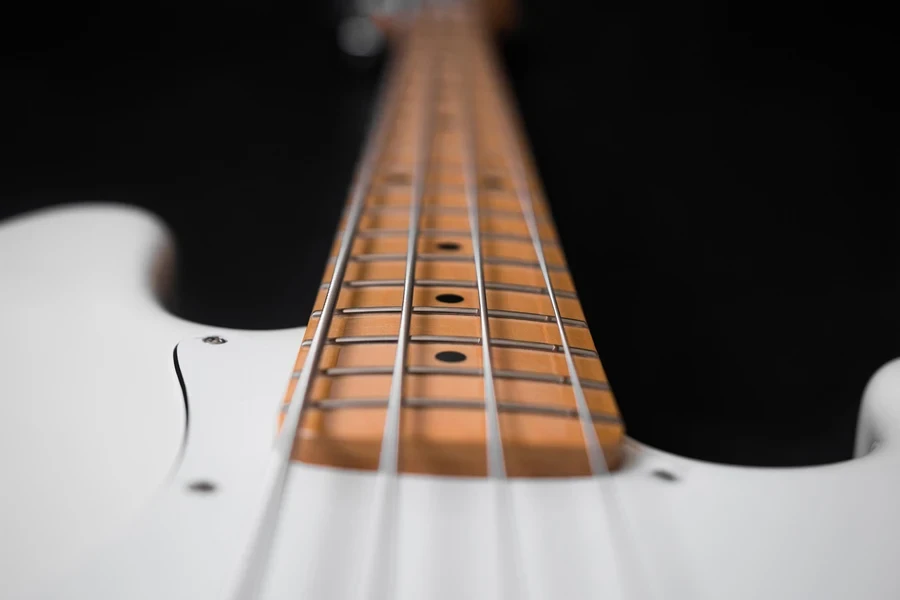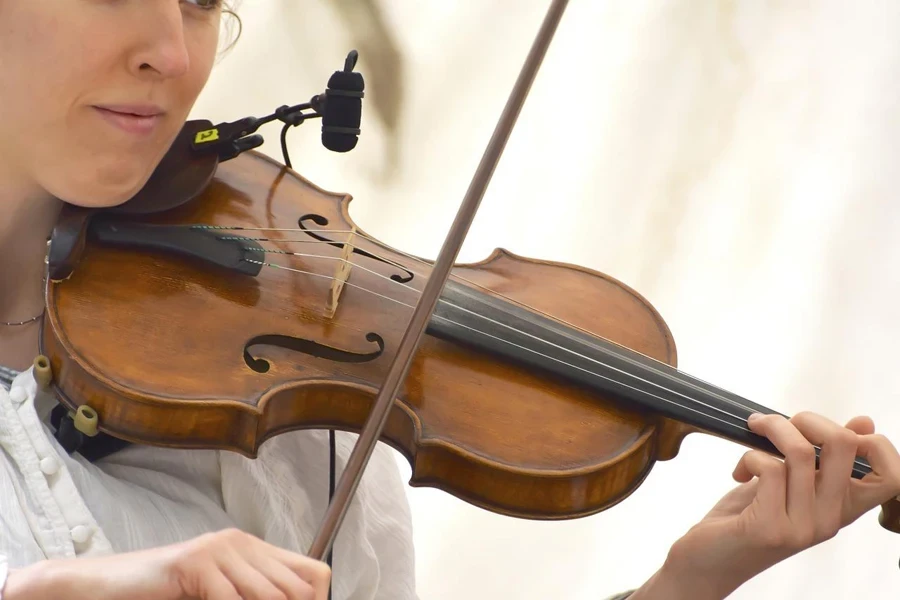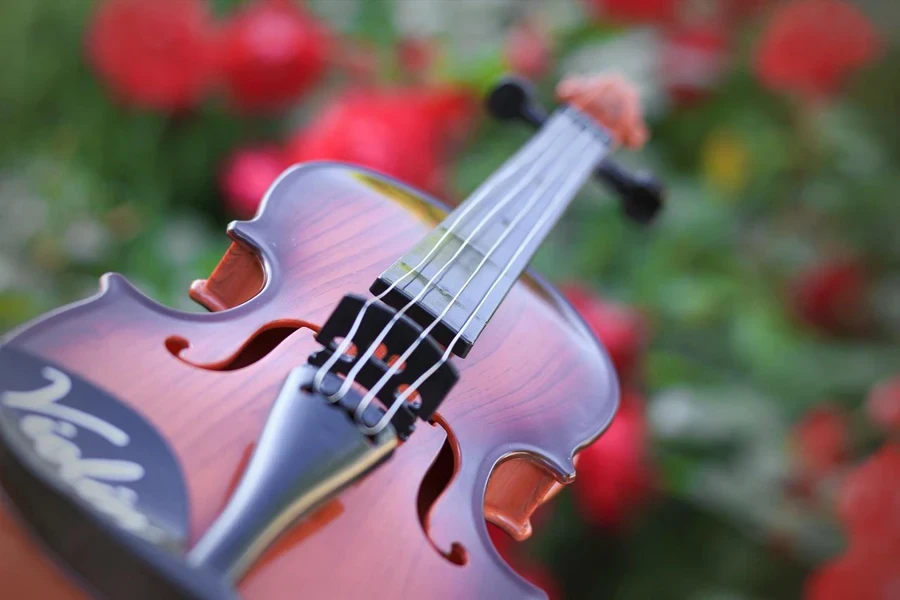Table of Contents
● Introduction
● Market overview
● Key technology and design innovations
● Top-selling models driving market trends
● Conclusion
Introduction
Quality parts and accessories for stringed instruments are essential for enhancing sound, playability, and durability, meeting the diverse needs of beginner and advanced musicians alike. From premium strings to ergonomic rests and high-tech tuners, today’s accessories elevate the musical experience while supporting maintenance. As demand rises, players seek innovative products that help them achieve their best performance.

Market overview
The global stringed instrument accessories market reached approximately $19.4 billion in 2023 and is projected to grow at a CAGR of 7.4%, potentially exceeding $27 billion by 2030. This market expansion is driven by a rising demand for quality accessories like strings, ergonomic rests, and durable cases. Asia-Pacific commands the largest market share, comprising over 40%, fueled by increased participation in music education in regions like China and India. In North America, where the market is valued at over $5 billion, demand is bolstered by cultural connections to genres such as jazz, folk, and classical music, which heavily feature stringed instruments, according to Fortune Business Insights and Grand View Research.
Major brands like Yamaha, D’Addario, and Fender are leading this sector through innovation in materials and design, responding to consumer preferences for enhanced sound quality and playability. For instance, D’Addario’s synthetic core strings have become popular for their durability and warm tone, aligning with the growing trend for high-performance, ergonomic accessories. Online sales channels are expanding rapidly as more musicians turn to digital platforms for convenience. This shift to online channels allows both amateurs and professionals easier access to premium products, which is expected to drive continued growth in the sector according to Fortune Business Insights and Grand View Research.

Key technology and design innovations
Recent advancements in materials and design have significantly enhanced the quality and functionality of accessories for stringed instruments, meeting the needs of today’s musicians. Synthetic core strings, such as D’Addario’s Ascente and Pirastro’s Tonica, are increasingly popular for their blend of warm tone and durability, which competes favorably with traditional gut strings. These synthetic options, constructed from innovative materials that resist humidity and temperature shifts, provide both consistent sound and resilience, essential for professional and student musicians alike, according to Simply for Strings. Additionally, the use of eco-friendly materials in strings and other components aligns with growing consumer demand for sustainable options, enabling environmentally-conscious brands to capture a larger market share.
Comfort and ergonomics have become a central focus, especially for violin and viola accessories where shoulder and chin rests impact both performance and posture. Advanced models, like the Wittner and Teka chin rests, are crafted to reduce strain on the player’s neck and jaw, allowing for longer, more comfortable play sessions, according to Simply for Strings. These ergonomic innovations are especially vital for student musicians, as they foster proper technique and reduce the risk of long-term physical issues from repetitive strain. High-quality shoulder rests, tailored to fit various body types and preferences, have also become essential purchases for both beginners and professionals, allowing for a more tailored playing experience.
Digital and smart accessories are transforming the practice and performance landscapes with products like digital tuners and sound-enhancing bows, providing precise control and feedback. Technologies such as AI-enabled learning tools offer interactive lessons and immediate performance feedback, helping players at all levels refine their techniques. According to Fortune Business Insights, these technologies cater to the increasing preference for personalized, accessible learning aids that adapt to the musician’s progress, thus reinforcing the role of technology in modern music practice.
Durable and lightweight cases are also in high demand, particularly among traveling musicians who require protective yet portable options. Modern cases are often made from materials like carbon fiber and reinforced polymers, combining strength with a lightweight structure that makes instrument transportation more manageable. According to Simply for Strings, these cases are increasingly designed to provide better shock absorption, temperature control, and water resistance, offering musicians peace of mind and greater convenience during travel.

Top-selling models and market trends
Top models across violins, violas, cellos, and basses remain in high demand due to their specific adaptations to player needs, from beginner to professional levels. Among violins, Yamaha’s high-performance models and Eastman’s violins are popular for their craftsmanship and quality materials, meeting the tonal and ergonomic needs of advanced players. Cellists and bassists gravitate toward brands like D’Addario for strings, which deliver warmth and clarity, as well as Wittner chin and shoulder rests, designed to enhance both comfort and resonance. For violists, the Karl Willhelm line, known for its balance and sound quality, has become a go-to for intermediate players according to Simply for Strings and Music & Arts. These top models emphasize reliability, ease of play, and consistent sound quality, qualities that resonate with musicians seeking a reliable instrument across diverse genres and skill levels.
Innovative accessories like the Wittner chin rests and D’Addario synthetic core strings are also key drivers of sales. According to Simply for Strings, Wittner’s chin rests are preferred for their ergonomic design, which reduces strain and supports long play sessions, while D’Addario’s synthetic strings are known for warmth, durability, and stable tuning. Additionally, for cellists and bassists, rockstops are essential, preventing movement on stage or during practice and contributing to a more stable, focused performance environment. These accessories not only fulfill basic functional needs but also reflect the market’s focus on products that improve playability and performance stability.

Subscription services are gaining traction in the market, appealing to musicians who seek regular updates and replacements for essential items like strings and cleaning supplies. Leading brands are now offering monthly or annual subscriptions, which include high-demand items such as D’Addario strings, rosin, and even select chin rests and shoulder pads. According to Simply for Strings, these services are popular among both students and professional musicians who value the convenience of automated product replenishment. Subscription models foster customer loyalty by providing a consistent, hassle-free supply of necessary accessories, aligning with the trend towards personalized and convenient purchasing options in the stringed instrument accessory market.
Additionally, portable storage and performance equipment have become staple accessories for both beginners and professionals, particularly as musicians demand greater ease and protection during transport. Lightweight yet robust cases, like those made from carbon fiber, have gained popularity for their ability to shield instruments from impact, humidity, and temperature changes. Some models now include adjustable compartments for accessories, adding functionality without compromising portability. According to Simply for Strings, high-quality stands and wall mounts for violins, violas, and cellos also support safer storage, encouraging consistent practice by keeping instruments accessible at home or in studio environments. This surge in demand for protective and functional storage solutions reflects broader market trends prioritizing durability, convenience, and safety, especially for musicians who travel frequently or play professionally.

Conclusion
The stringed instrument accessories market continues to thrive by blending advanced materials, ergonomic designs, and innovative technology to meet the evolving needs of musicians. As demand rises, key players focus on improving sound quality, comfort, and portability, delivering durable, high-performance accessories that enhance both practice and performance. Subscription models and digital channels have also reshaped the market, providing convenient options for recurring needs and expanding access to a wide array of products. These trends underscore a shift toward customization and ease of use, solidifying the role of high-quality accessories in supporting musicians at every level.



